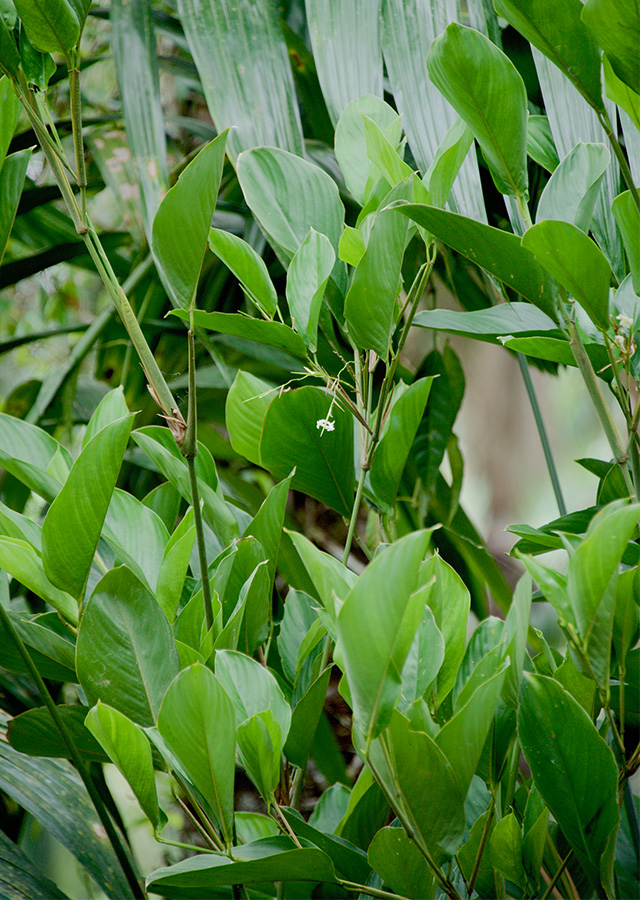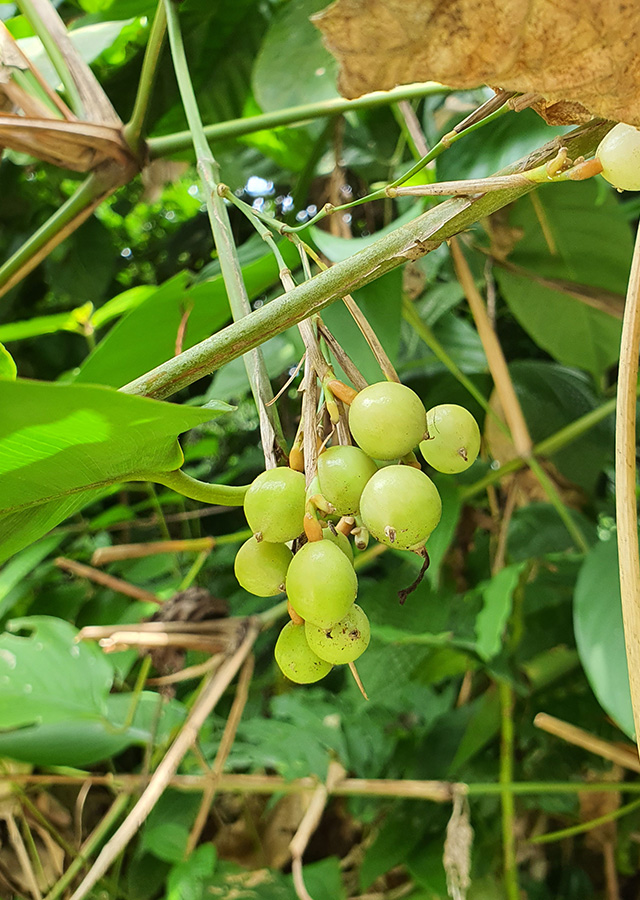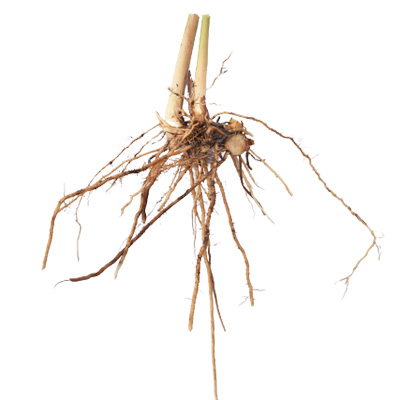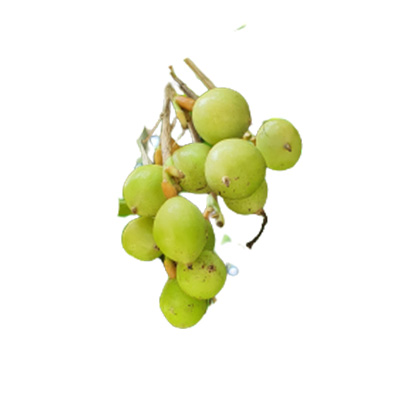Bamban
Donax canniformis (G.Forst.) K.Schum.
Marantaceae
Location in our garden
Aquatic



Synonym
Actoplanes canniformis (G.Forst.) K.Schum.
Arundastrum grande (Miq.) Kuntze
Clinogyne dichotoma Salisb. ex Benth.
Habitus
Herbaceous. A perennial, stout, erect, shrub-like herb, 2-5 m tall
Part Used
Leaves
Fruit
Roots
Stem
Growing Requirements
Full Sunshine
Need Shade
Habitat
Aquatic
Wetland
Shrublands
Overview
Bamban is distributed to southern China, Taiwan, and Polynesia from India in South-East Asia. Its stem material is widely used in South-East Asia to develop baskets, bags, mats, trays, fish traps, stitching thatch, and other tying work. As rattans become scarcer, the significance of bamban as a source of weaving material in South-East Asia tends to increase. Still, its products generally have lower quality than those made of rattan because they are typically not durable.
Vernacular Names
Daem run (Cambodia), Zhu ye jiao (Chinese), Bamban (Brunei, Philippines), Bemban (Malaysia), Klah (Thai), Dong s[aaj]y (Vietnamese).
Agroecology
D. canniformis develops in wet locations, such as swamps and occasionally flooded areas. In South-East Asia, it occurs in secondary forests, teak forests, and bamboo forests up to around 1,000 m altitude, but also in coconut plantations and near paddy fields. It thrives in full sun in semi-shaded environments, and requires waterlogged, loamy soils.
Morphology
- Stems - true, slender, sympodially branching stems, hard, upright woody stems that resemble smooth bamboo stems. The stems grow to about 1–2 m tall before branching and producing leaves.
- Leaves - all cauline, sheathed, thin-coriaceous, petiole 1-2.5 cm long, blade broadly ovate to elliptical, 10-45 cm × 4-25 cm, base rounded, apex acuminate.
- Flowers - inflorescence terminal on a leafy branch, bracts 9-11, obovate to lanceolate, in pairs, sepals 3, triangular-ovate, 3-5 mm long, white, glabrous.
- Fruits - globose to ellipsoid, 1-1.5 cm in diameter, dry, indehiscent, subglabrescent, whitish-cream, crowned by the withered flower, 1-2-seeded.
- Seeds - globose to ellipsoid, 7-8 mm in diameter, grooved, warty, brown.
Cultivation
Propagated by seeds or by division of plants. Seeds are sown first.
Chemical Constituents
Saponins, flavonoids, cardiac glycoside, poliphenol, tannin, phytosterol, terpenoids, steroids, alkaloids.
Traditional Medicinal Uses
Medicinal Uses
- The plants have anti-inflammatory activities, which could be further developed as a new source of anti-inflammatory medication.
- For antioxidant activity, various extracts of leaves, fruits, stems, and roots were evaluated.
Traditional Uses
- A root decoction is used for snake bites and for blood poisoning as an antidote. For fungal infections, the juice from crushed roots is used.
- In the Philippines (Porac-Pampanga), the plant is used for the treatment of pasma.
- In Macassar, the bilious paste is taken from young stems with ginger and cinnamon bark.
- In Malaysia, the Temuans orally use the raw fruit for boils and abscesses. For sore eyes, the juice from young leaves curled up is used. Young shoot infusion is drunk for treatment of fever. To treat conjunctivitis, Malays use the sap from shoots. To treat shingles, rhizomes are used. Leaf and root decoction is used as cooling baths for fever. A poultice of leaves and stem is used as eye refreshment.
- In Vanuatu it is used to draw placental fragments in postpartum: the right side of the leaf's blade is pressed into a drinkable glass of water.
- In Papua New Guinea, it is used for the prevention of ear pain and ear infections.
- In Indonesia, it is used for abscesses.
Part Used
Reference Sources
- Globin Med. (No date). Donax canniformis (G. Forster) K. Schumann. https://www.globinmed.com/index.php?option=com_content&view=article&id=62912:donax-canniformis-g-forster-k-schumann. 21-12-2020
- StuartXchange. (2016). Philippines Medicinal Plants: Donax cannaeformis. http://www.stuartxchange.org/Bamban.html. 21-12-2020




